#cotton office
Explore tagged Tumblr posts
Text

A Cotton Office in New Orleans
Artist: Edgar Degas (French, 1834–1917)
Date: 1873
Medium: Oil on canvas
Collection: Metropolitan Museum of Art, New York City, NY, United States
#painting#interior scene#genre art#office#new orleans#oil on canvas#cotton office#men#office workers#chairs#cotton#newspaper#table#documents#artwork#french art#french culture#oil painting#fine art#french painter#edgar degas#19th century painting#european art#metropolitan museum of art
82 notes
·
View notes
Text


🌸 when the Hindriarch banished Eskhind and her kin from Bey Lah, Neelahind would follow her heart into voluntary exile. To abandon a surefooted life, as well as a coveted spot among the Fellowship, is nearly unheard of among both hindren and Wardens, but Neelahind was glowing when she took her leave. I hear the pair are quite happy together, practicing arconautics in the ruins to the west—at least, that's what the kendren bring news of when they come back to trade.
back at it again w more caves of qud deer gals 😏✨ i'm kind of enamored with the ending to the Bey Lah quest where Esk and Neela both take off, so i wanted to see what they'd look like as a matched set of lesbian pariah-arconauts. geez, i can’t believe it’s been almost two years since i drew them last
image descriptions under break!
img desc: A drawing of a hindren deerfolk girl from "Caves of Qud". On the left a title card reads "Pariah Neelahind (she/her)". Some of the details are labeled. Her fur is a rich cedar red, with a lighter heartwood underbelly curling under her arms and on the inside of her legs down to her hooves; her curly hair is dark mahogany, tied back in a ponytail with a sky-blue bandana; her antlers are a pale heartswood, deepening to a rich velvet at the tines. She’s smiling, looking up and off to her right; she's poised upright, her arms spread to either side of her as she grips the haft of her war-scythe Yal, which is laying across her shoulders. She’s wearing shining steel platemail—a breastplate over a nanoweave surcoat patterned with pale lemon slices over pink (called "Pink Lemonade"); her armor is incomplete, but well taken care of. She’s wearing leather braces, a steel gauntlet on her left hand only, and a woven blue sash and bedroll across her back.
img desc: A drawing of a hindren deerfolk girl from "Caves of Qud". On the right a title card reads "Pariah Eskhind (she/it)". Some of the details are labeled. Her fur is ashen, with her pale undercoat spotting through on her forearms and flanks. Her messy hair is a greenish bleach-blonde, and one of her ears has a hole in it; her antlers are pale and their velvet is darker grey, and they're covered in little tied-on charms and brass tine hornaments. She has an eyepatch over her left eye, and a gap between her front teeth. She's grinning, slouching in a relaxed fashion, pulling back her hood with one hand and flashing a rock-on with the other; her front two legs are crossed, while the back two are spread like she's posing for a picture. She's wearing a well-worn chainmail hauberk, which extends down over her back; a ragged cowl, with buttoned slots along the hem of the hood for her antlers to fit through; a leather bracer on her left wrist, a steel pauldron on her right shoulder, a fingerless elastyne glove on her right hand, and two pairs of croccasins on her hooves. A pocketed saddle is slung over her back, along with a backpack and bedroll; on either side, the pockets are full of tools and bits. Tucked into her swordbelt is a sheathed folding carbide longsword and a gaslight kris; slung across her chest is a bolt-action rifle called "Peashooter" (it has a lesbian flag on its stock). Around her legs are several beaded bracelets and charms; one of them is the rightfully reclaimed Kindrish, complete with its carved deer charm.
#polyart#caves of qud#fanart#cervitaur#eskhind#neelahind#i actually kin neela really hard lol#i like drawing her being confident n happy even if she's apparently in more dangerous n unsure situations#something something transgender#esk is right at home tho she's such an adrenaline junkie#fun lil details include#the waxing crescent gorget neela's using as a makeshift pauldron#that's a badge of office for the fellowship#no point in flaunting it anymore#“escaupil” actually refers to a kind of woven armor used by the mexica back during the time of the conquest#it was really thickly woven cotton armor that was soaked in brine to harden it even further#it was really good at deflecting arrows n other projectiles#i like the idea of a nanoweave escaupil#in stark contrast to the iron plate and chainmail worn by the conquistadores#and marrying the old traditional forms of the hindren with the retrofuture aesthetics of arconauts#esk isn't actually missing an eye#she's just operating on pirate logic#in case she needs to go into a dark hole somewhere she flips the patch n has nightvision#she's silly like that#also peashooter is a spara exclusive ofc#she's an absolutely terrible shot tho
697 notes
·
View notes
Text

2 days in the making, and my hand hurts, but I managed to squeeze this out before Christmas!
418 notes
·
View notes
Text
i need to bite. I NEED TO KILL.
#GRRRRRRRR BITE BITE BARK BARK GRRRRRRRR#vent.txt#edit: context is local lesbian was working outside in 32°C heat w/ humidity levels making it feel like 39°C#not to mention wearing a heavy cotton shirt and thick pants bc she was anticipating going into office but well. field work day apparently!
2K notes
·
View notes
Text
These two are adorable! 🥰✨🥰
🎥 @dionareasonover via Twitter/X (September 19, 2022)
#gary cole#alden parker#diona reasonover#kasie hines#ncis#ncis hawaii#twitter handle#shoelace man#season 20 premiere#live tweeting#crossover event#video#kent davison#veep#veep hbo#office space#bill lumbergh#kurt mcveigh#talladega nights#reese bobby#dodgeball#cotton mcknight#midnight caller#jack killian
69 notes
·
View notes
Text



Today I learned how to sew tulle 😤
#personal#so the story is this#we’ve got end of year celebrations at the company#and volunteers help out the office manager to pick a theme develop games etc#so of course I volunteer#bc it’s a fun excuse to make an outfit#so this year we do winter wonderland#tadaaaaa ice dress!#also gonna make a gold and white hair vine lmfao#it’s a layer of cotton for underskirt a layer of organza for shiny and tulle on the outside
12 notes
·
View notes
Text
Cutely places these and runs away
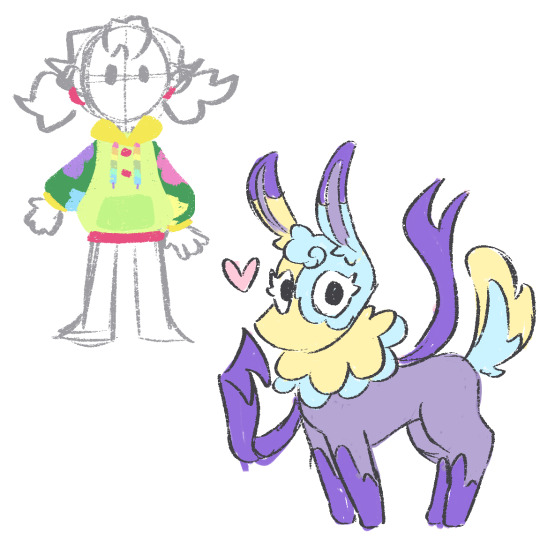
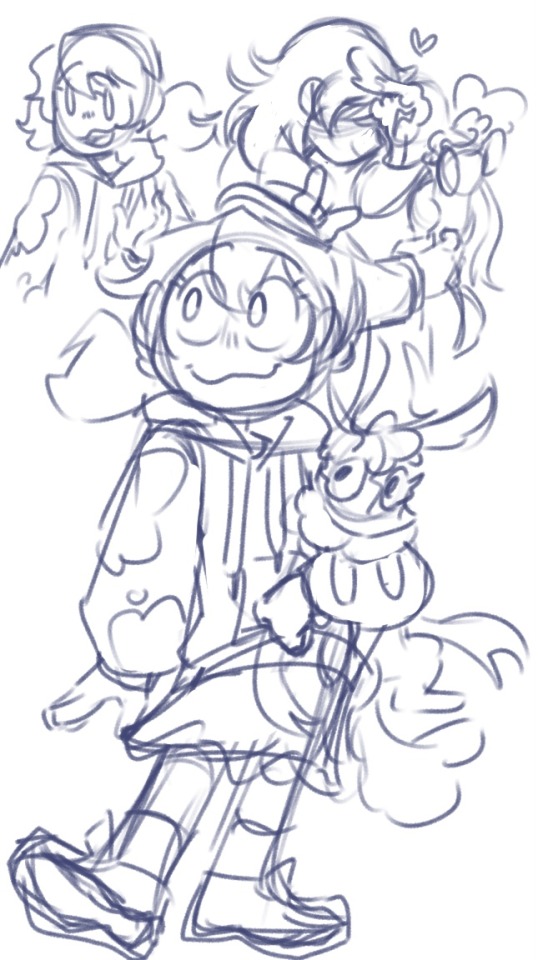
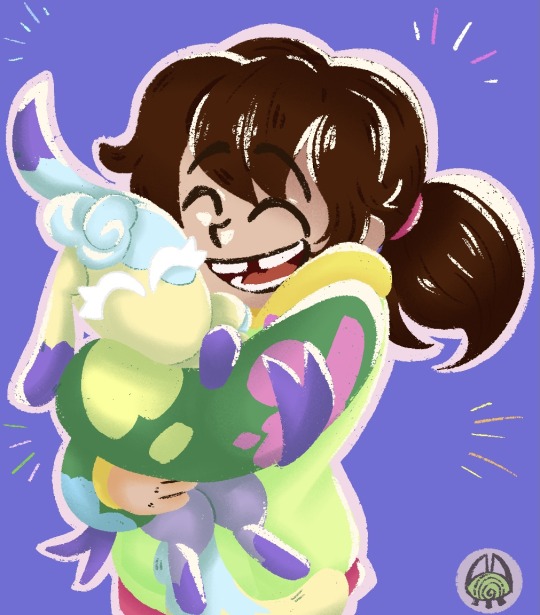
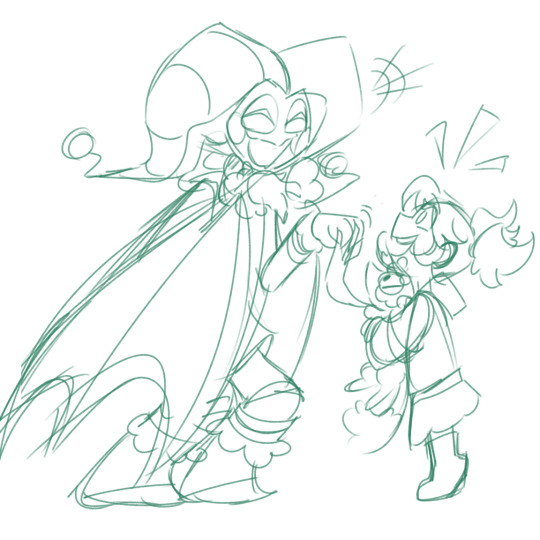
#For my wtdw fans ^^#Old and new doodles#doodles#welcome to dreamworld#wtdw#offical art#wtdw sona#Wtdw twimblo oc#Cotton the twimblo#Ehehehe#my art#Oki I got to sleep nowww
101 notes
·
View notes
Text
Do I need more clothes? No, probably not.
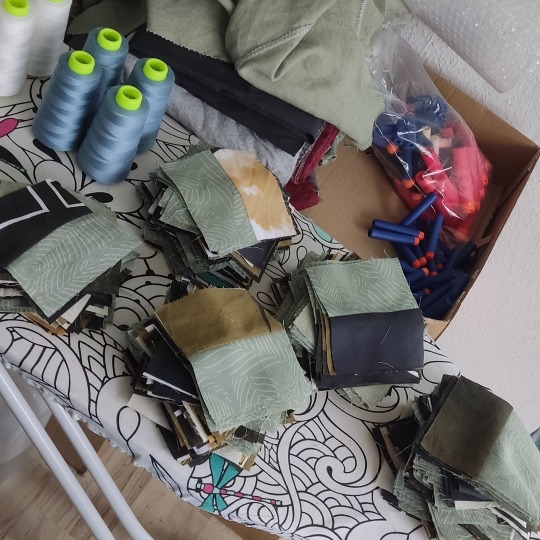
But I've got all these squares now. And I did math and adjusted my skirt pattern. And the bodice pieces are already cut out.
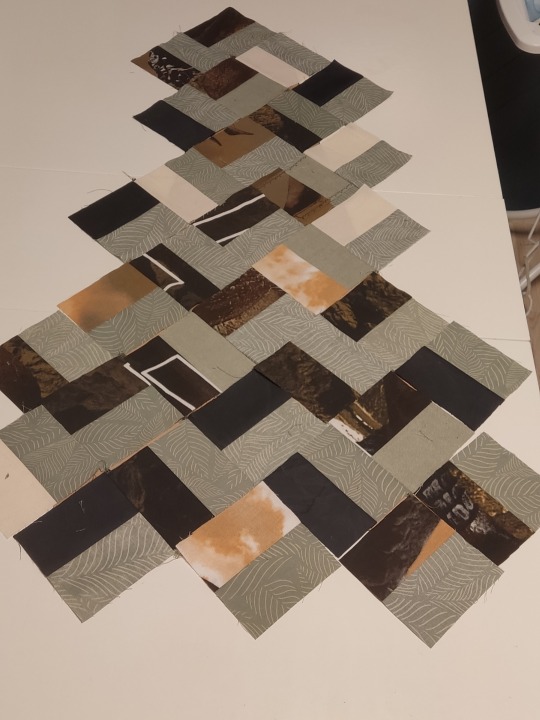
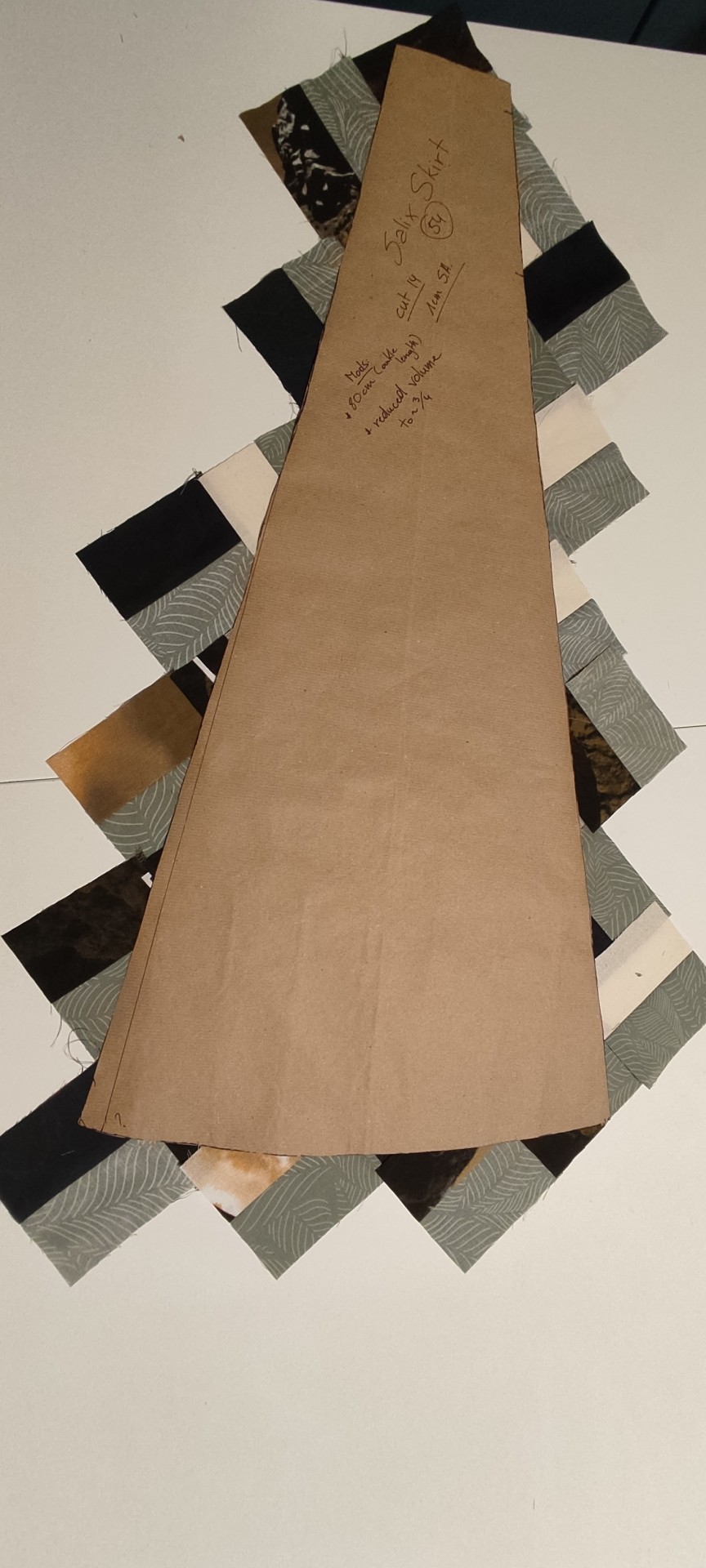
And, and... I would have to turn these into an actual quilt if I don't, and I'm pretty much out of materials to do that.
#sewing#patchwork#quilting? probably not#it's gonna beeeee#the Hinterland Dress by Sew Liberated for the bodice#with the back elastic hack and a 3/4 sleeve minus the cuff#Salix Skirt by Unendlich Schön#lengthened to 80 cm and reduced to 3/4#with that pocket mod I did on my last blue dress#patchwork/quilt pattern is Spiny Peaks by Modafabrics#fabric is a mix of leftovers from mostly bedsheets and a little bit of ikea linen and white calico cotton#yes another dress#sometimes adaptive clothing is wearing house dresses wherever#no ibs issues no sensory issues no trying to be office appropriate through morning brain fog#i technically maybe have enough backing fabric#but I don't have batting and no batting money#so flat lined skirt it shall be#trust issues dress
16 notes
·
View notes
Text

5 notes
·
View notes
Text
What Happened When a Fearless Group of Mississippi Sharecroppers Founded Their Own City
Strike City was born after one small community left the plantation to live on their own terms
— September 11, 2023 | NOVA—BPS
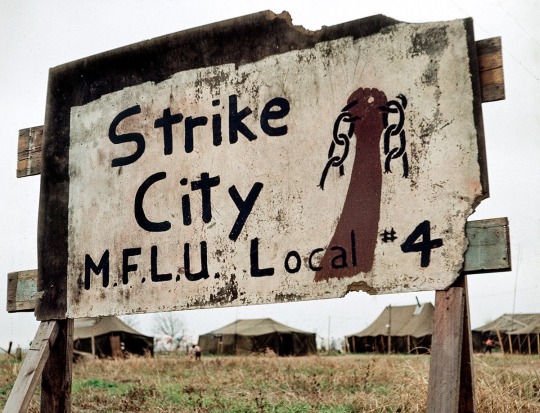
A tin sign demarcated the boundary of Strike City just outside Leland, Mississippi. Photo by Charlie Steiner
In 1965 in the Mississippi Delta, things were not all that different than they had been 100 years earlier. Cotton was still King—and somebody needed to pick it. After the abolition of slavery, much of the labor for the region’s cotton economy was provided by Black sharecroppers, who were not technically enslaved, but operated in much the same way: working the fields of white plantation owners for essentially no profit. To make matters worse, by 1965, mechanized agriculture began to push sharecroppers out of what little employment they had. Many in the Delta had reached their breaking point.
In April of that year, following months of organizing, 45 local farm workers founded the Mississippi Freedom Labor Union. The MFLU’s platform included demands for a minimum wage, eight-hour workdays, medical coverage and an end to plantation work for children under the age of 16, whose educations were severely compromised by the sharecropping system. Within weeks of its founding, strikes under the MFLU banner began to spread across the Delta.
Five miles outside the small town of Leland, Mississippi, a group of Black Tenant Farmers led by John Henry Sylvester voted to go on strike. Sylvester, a tractor driver and mechanic at the A.L. Andrews Plantation, wanted fair treatment and prospects for a better future for his family. “I don’t want my children to grow up dumb like I did,” he told a reporter, with characteristic humility. In fact it was Sylvester’s organizational prowess and vision that gave the strikers direction and resolve. They would need both. The Andrews workers were immediately evicted from their homes. Undeterred, they moved their families to a local building owned by a Baptist Educational Association, but were eventually evicted there as well.
After two months of striking, and now facing homelessness for a second time, the strikers made a bold move. With just 13 donated tents, the strikers bought five acres of land from a local Black Farmer and decided that they would remain there, on strike, for as long as it took. Strike City was born. Frank Smith was a Student Nonviolent Coordinating Committee worker when he went to live with the strikers just outside Leland. “They wanted to stay within eyesight of the plantation,” said Smith, now Executive Director of the African American Civil War Memorial and Museum in Washington, D.C. “They were not scared.”
Life in Strike City was difficult. Not only did the strikers have to deal with one of Missississippi’s coldest winters in history, they also had to endure the periodic gunshots fired by white agitators over their tents at night. Yet the strikers were determined. “We ain’t going out of the state of Mississippi. We gonna stay right here, fighting for what is ours,” one of them told a documentary film team, who captured the strikers’ daily experience in a short film called “Strike City.” “We decided we wouldn’t run,” another assented. “If we run now, we always will be running.”
But the strikers knew that if their city was going to survive, they would need more resources. In an effort to secure federal grants from the federal government’s Office of Economic Opportunity, the strikers, led by Sylvester and Smith, journeyed all the way to Washington D.C. “We’re here because Washington seems to run on a different schedule,” Smith told congressmen, stressing the urgency of the situation and the group’s needs for funds. “We have to get started right away. When you live in a tent and people shoot at you at night and your kids can’t take a bath and your wife has no privacy, a month can be a long time, even a day…Kids can’t grow up in Strike City and have any kind of a chance.” In a symbolic demonstration of their plight, the strikers set up a row of tents across the street from the White House.
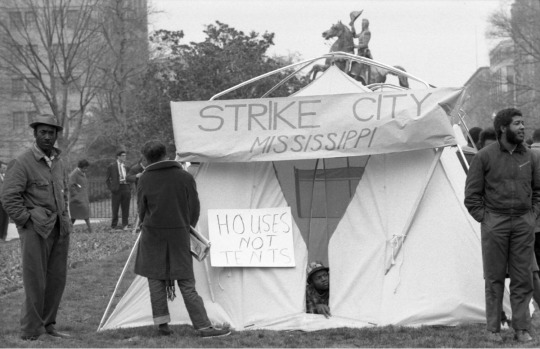
John Henry Sylvester, left, stands outside one of the tents strikers erected in Washington, D.C. in April 1966. Photo by Rowland Sherman
“It was a good, dramatic, in-your-face presentation,” Smith told American Experience, nearly 60 years after the strikers camped out. “It didn’t do much to shake anything out of the Congress of the United States or the President and his Cabinet. But it gave us a feeling that we’d done something to help ourselves.” The protestors returned home empty-handed. Nevertheless, the residents of Strike City had secured enough funds from a Chicago-based organization to begin the construction of permanent brick homes; and to provide local Black children with a literacy program, which was held in a wood-and-cinder-block community center they erected.
The long-term sustainability of Strike City, however, depended on the creation of a self-sufficient economy. Early on, Strike City residents had earned money by handcrafting nativity scenes, but this proved inadequate. Soon, Strike City residents were planning on constructing a brick factory that would provide employment and building material for the settlement’s expansion. But the $25,000 price tag of the project proved to be too much, and with no employment, many strikers began to drift away. Strike City never recovered.
Still, its direct impact was apparent when, in 1965, Mississippi schools reluctantly complied with the 1964 Civil Rights Act by offering a freedom-of-choice period in which children were purportedly allowed to register at any school of their choice. In reality, however, most Black parents were too afraid to send their children to all-white schools—except for the parents living at Strike City who had already radically declared their independence . Once Leland’s public schools were legally open to them, Strike City kids were the first ones to register. Their parents’ determination to give them a better life had already begun to pay dividends.
Smith recalled driving Strike City’s children to their first day of school in the fall of 1970. “I remember when I dropped them off, they jumped out and ran in, and I said, ‘They don't have a clue what they were getting themselves into.’ But you know kids are innocent and they’re always braver than we think they are. And they went in there like it was their schoolhouse. Like they belonged there like everybody else.”
#The Harvest | Integrating Mississippi's Schools | Article#NOVA | PBS#American 🇺🇸 Experience#Mississippi Delta#Cotton | King#Abolition | Slavery#Black Sharecroppers#Mechanized Agriculture#Mississippi Freedom Labor Union (MFLU)#Leland | Mississippi#Black Tenant Farmers#John Henry Sylvester | Truck Driver | Mechanic#A.L. Andrews Plantation#Fair Treatment | Prospects#Baptist Educational Association#Frank Smith | Student | Nonviolent Coordinating Committee#Strike City#Executive Director | African American | Civil War Memorial & Museum | Washington D.C.#Federal Government | Office of Economic Opportunity#Congress of the United States | The President | Cabinet#Brick Homes | Black Children | Literacy Program#Wood-and-Cinder-Block | Community Center
7 notes
·
View notes
Text

I drew this today, Cotton, in her office outfit, a character sheet to help with the consistency for the future, and if someone wants to make fan-art.
171 notes
·
View notes
Text









The Brilliantly talented Gary Cole! Man of a THOUSAND expressions. 🤣💫💖
[source]
🥰 @justtopostmyfic-blog @abby-cuddles @dianelockhartoninstagram @crazymaryt
#gary cole#alden parker#ncis#kent davison#veep#bill lumbergh#office space#kurt mcveigh#the good wife#the good fight#reese bobby#talladega nights#cotton mcknight#dodgeball#jack killian#midnight caller#daily blast live#video#gary cole gifs
47 notes
·
View notes
Text
KNITWORLD EMPLOYEES YOU WILL SEE HEAVEN I WILL ENSURE IT
#went to buy their peruvian ayni cotton they gad on sale#for $10 instead of $16 (same brand i got the the last of the colourwork for their baby alpaca and 3 of their silk+alpaca for the same price)#and grabbed 2 skeins of the last 2 bright yellow ones. went up front and it came up to $32 and i was like ''woah wait its full price?''#and the older lady looked at it and was like ''what. the hell?? it is??''#and we both thought it was a while stocks last sale not a to a certain date sale#ahd i was like ''fair play its the first day back of the year i dont blame you for being out of the loop i know how corporate can be''#and was fully prepared to go get a couple less nice quality wools in similar colours#but ahe was like ''nah we have like the stand up and the sale sign and everything thats unfair''#so she called up head office and they called up the tech people and found a way to retroactively#have me go through as preorder purchasing the yarn for NEXT WEEKS SALE (which will put them all on sale at the previous sale price + others)#and allowing me to get the yarn then and with the paying being the ''prepay''#god fucking bless them fr they were so kind doing that
4 notes
·
View notes
Text
Happy Monday!!!!!!

#Bailey Smith#this is how you advertise cotton on#Bailey just like 'hi cotton on please give me $$$$$ because i showed off your brand in my latest post thank you it was hard work'#tough day in the office for baz#everyone pray for Bailey Smith#stay strong bailey#he's doing it tough at the moment
6 notes
·
View notes
Text
Custom Linen Curtains Dubai

Transform your interior with Custom linen curtains in Dubai at CurtainExpert.ae. Our made to measure curtains are expertly crafted with premium quality linen fabric, offering a timeless and elegant look to your home décor. Our design team works closely with you to create the perfect curtains to match your personal style and interior. Shop now for the best custom linen curtains in Dubai.
#Silk Curtains#Living Room Curtains#MOTORIZED CURTAINS#Bedroom Curtains#Office Curtains#Cotton Curtains#Linen Curtains#Chiffon Curtains#Blackout Curtains
4 notes
·
View notes
Text

Upgrade Your Style with Beautiful Blue Puff Sleeve Dresses for Women
Add a pop of color and style to your wardrobe with a beautiful blue puff sleeve dress from Jaipur Morni. These dresses are the perfect blend of comfort, elegance, and trendiness, designed for the modern woman. Available in a variety of sizes and styles, they’re perfect for a casual day out or a more formal celebration. Discover the beauty of blue sleeve dresses today and find the one that enhances your unique sense of style. Shop now.
0 notes